With the GP sequel on the horizon, let’s find out in our retrogaming special what made the first Chocobo Racing so … peculiar
We’ve caught the ball (or maybe it’s better to say the wheel) with the arrival of the exclusive sequel to Nintendo Switch, simply titled “GP”, To dedicate an impromptu episode from our column of Retrogaming to one of the kart racers for PlayStation: the original Chocobo Racing. And we don’t say “original” just for chronological reasons, quite the contrary. Certainly, it cannot be said that the first chapter did not know how to stand out in his time. That of the good old PS1 (or “Play1” in the common jargon) was (and still is) a very colorful box of chocolates, despite the greyness of the casing.
However, despite being one of the first titles belonging to the spinoff series dedicated to the yellow chicks, it was clear that in its infancy the sub-franchise already had something to say. For this reason, let’s see on the fly how the former mount of the protagonists of Square-Enix fared after opening its wings for its first solo race. There is not much to say in terms of plot, but if we talk about contributing to the pantheon of the role-playing giant, we will discover that instead of leaving us the (yellow) feathers, the jovial gallinaceous left us speechless with a simple “Kweh ! “
Don’t call it a spinoff
After (the first) two contributions to the Mystery Dungeon series and the World episode released on the Japanese PocketStation, as you will discover in this chapter of our retrogaming column Chocobo Racing has laid the foundations on which GP will build a new worthy rival of Mario Kart. Not that the narrative sector of the game is something to cry for a miracle: the incarnation of Cid created specifically for the sub-series wants to test a pair of motorized rollerblades, and Chocobo’s skill with them arouses the envy of Mog the Moogle. From there, it’s all a succession of winks to fans of Final Fantasy longtime.
This includes the then unreleased first few chapters as the roster reunites, between a crystal and a Behemoth. All the elements of the flagship franchise of the then maiden Squaresoft they look good or bad, but in hindsight there are two things that catch the eye. First of all, the style of the cutscenes is a mix of sprites and polygons along the lines of Paper Mario, imitating a animated book as we would have enjoyed years later in the excellent Final Fantasy Fables: Chocobo Tales on Nintendo DS. Secondly, the game featured an early release: August 1999 instead of autumn, in what for some was a sign of one hasty development.
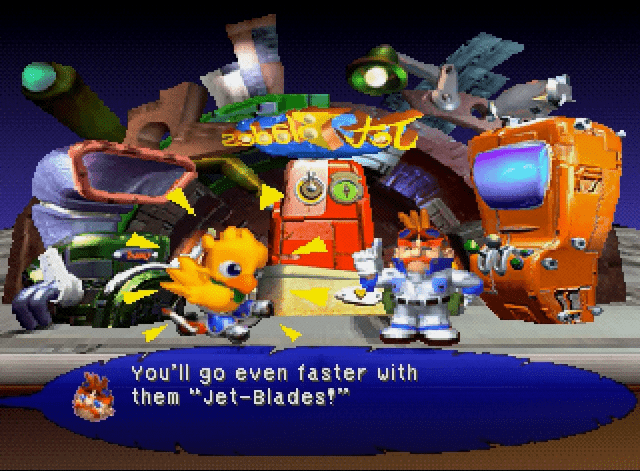
The modes and the shadow of Mario Kart 7 – Retrogaming: Chocobo Racing and the road to the GP
We don’t know if the mode roster will be the same in Chocobo GP, but as far as the original Racing is concerned, we also have more than the average retrogaming enthusiast can expect. As for the story mode, there is not much to say: it is a very linear mode, which allows the creation of a highly customizable driver (after the credits). Unlike the free adventure of Crash Team Racing, in this case finishing a race inevitably leads us to the next one, until the customizable driver is unlocked after the credits. For now, let’s move on.
For the rest we have the Versus Mode for multiplayer, the Grand Prize for the championships, the Time Attack to refine our timing and, finally, the modality Relay Race. This is, as the English speakers have already guessed, a relay race that will see us master a different driver for each of the three laps of the track. An option… unusual, if you like, that reminds us how much there has never been any guarantee for lovers of fast game sessions. After all, it is not something to be taken for granted: we saw it with the much better known Mario Kart 7 twelve years later. What else to say?
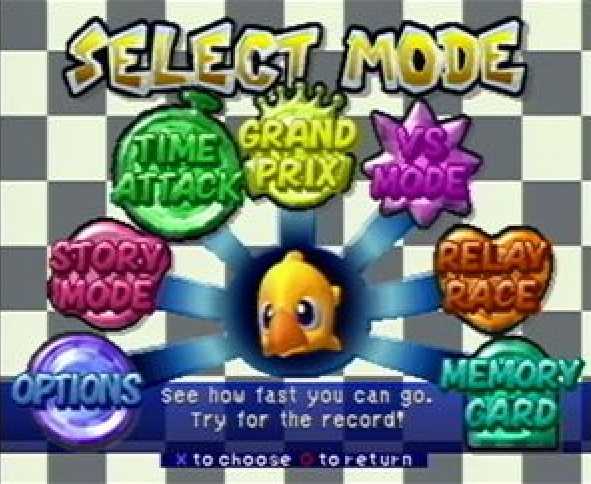
Press brake to accelerate – Retrogaming: Chocobo Racing and the road to the GP
The first impact with Chocobo Racing, for those who, like this writer, entered the genre with the aforementioned Crash Bandicoot spinoff, can be at least confusing. And no, we are not talking about using the Piros as an improvised traffic light, but rather about the controls. There are those among the critics who have not been lenient with the game, given the use of the directional cross in the climate dominated by the then newborn analogue levers (well exploited by the competition). However, nothing beats choosing the square (instead of the cross) as a button used foracceleration; on the contrary, following the instinct would only generate dust at our feet.
The same goes for the choice of the dorsal buttons – before we all called them “triggers” – to take advantage of the power-ups scattered along the tracks. And being this the concept of Wacky Races within the context of Final Fantasy, it is more than natural that the weapons at our disposal can only be the spells ritual. The spheres present on the track grant us a bit of everything, from the family of Fire spells to the classic Haste adapted, of course, to turbo. The peculiarity of this idea lies in the fact of being able to create more powerful variants by collecting more spheres of the same type. As we understand it, the next chapter coming to Switch follows the same reasoning.
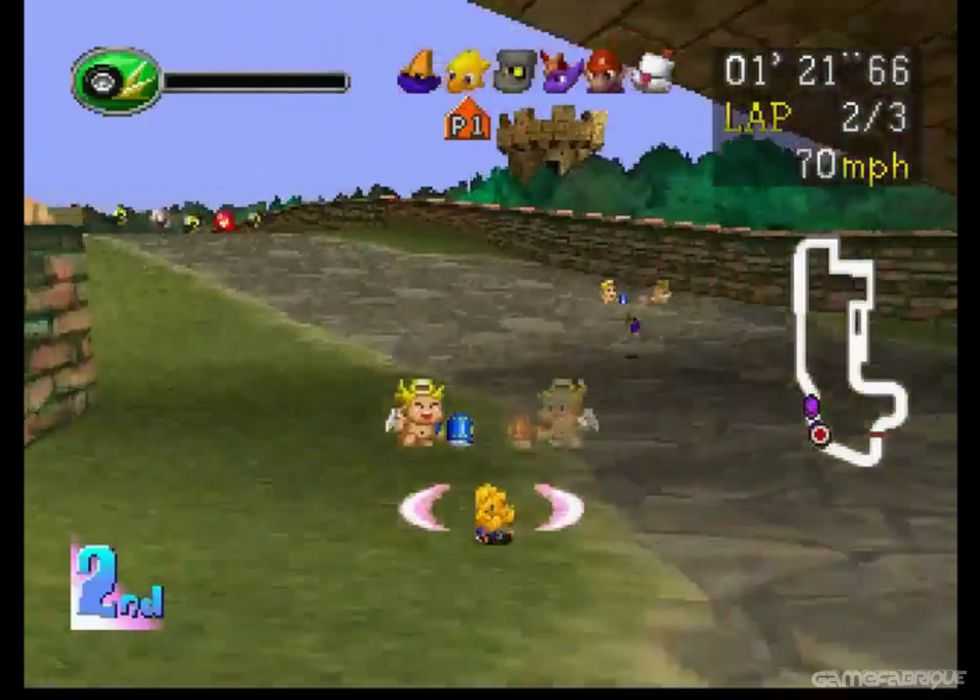
Limit Break at the Finish Line – Retrogaming: Chocobo Racing and the road to the GP
Of course, and this is ironic given the same “cost cutting” seen in Mario Kart 64 (2D characters on 3D tracks), in a Squaresoft production the spectacular must never be lacking. And it is normal, therefore, that as the various characters are unlocked the same also happens for theirs ability. Each member of the colorful roster, in fact, boasts a peculiar move that can be equipped by anyone immediately after choosing their pilot. The abilities range from Mog’s wings to give the character a temporary levitation to manage the dirt to the “Grip” to avoid cursing at the umpteenth sharp bend.
Speaking of the roster, it is good to reiterate who is the first extra character obtained at the second viewing of the credits: none other than Squall Leonhart from Final Fantasy VIII, who is also the only additional driver to bring an entire track with him. The so-called Final Fantasy VIII Circuit resumes the game of origin with those that in hindsight seem to be in all respects promotional purposes, but re-facing the story mode will give us characters from the most sensible (Cloud Strife aboard the Hardy-Daytona, not even to say so) to the least expected (Jack from 3-D WorldRunner, among other things).
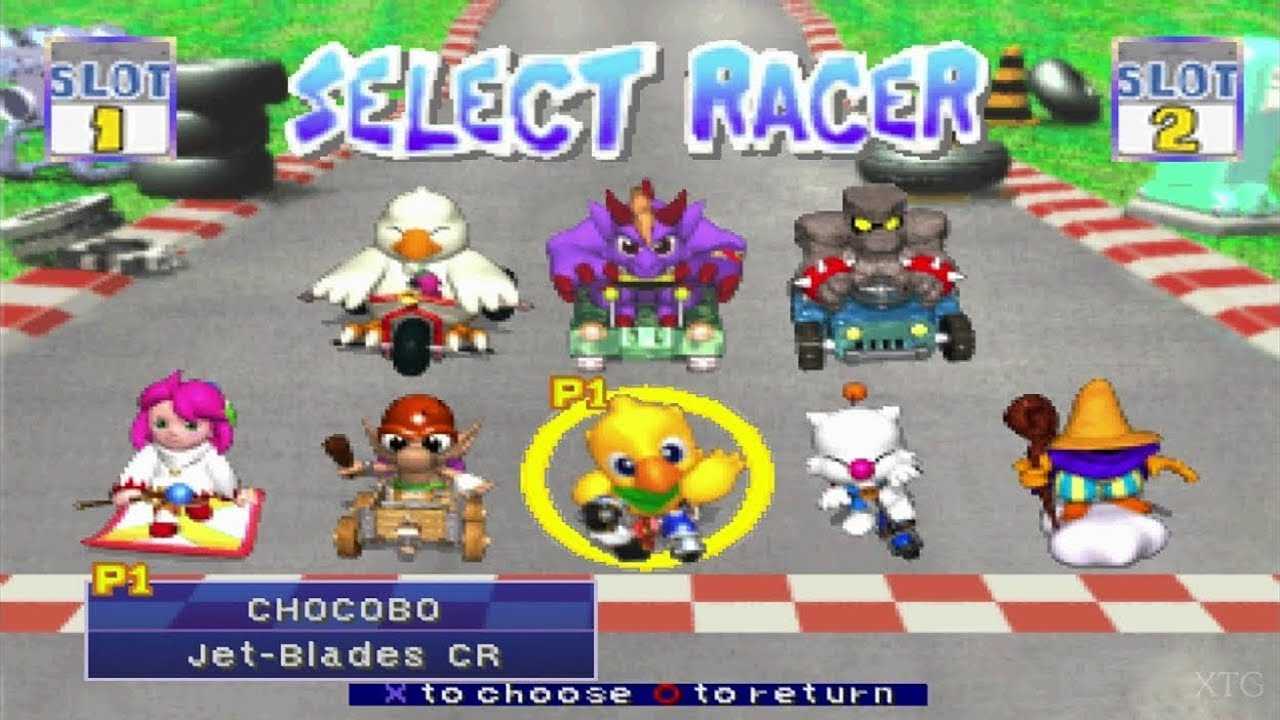
A question of technique – Retrogaming: Chocobo Racing and the road to the GP
By way of review, nothing prevents us from evaluating the game on its merits. And in terms of graphics, despite some nice ideas (one of all the customizable pilots, complete with color gradation exactly like in the Final Fantasy dialog boxes), the feeling of a production on a tight budget is always tangible. Let’s talk about 1999: in addition to the “unfair” competition of Crash Team Racing, it must also be said that any other development team at the time (not to mention Squaresoft itself) has already shown that it knows how to squeeze the hardware much more than that. A six politician, FMV permitting.
Very different, however, the speech of music. Kenji Ito has really indulged in rearranging Nobuo Uematsu’s melodies to fill tracks and dialogues with personality. So here is that “Hey Cid!” from Final Fantasy IV returns with a fairytale-like instrumentation to accompany the mechanic’s appearances, while the pirate theme from Final Fantasy V recurs in a western key for the exuberant Goblin. There really is something for everyone, and that’s why “Itoken” has rightfully earned a place in the musical pantheon of (what else?) Super Smash Bros., from Brawl to the never-too-praised Ultimate.
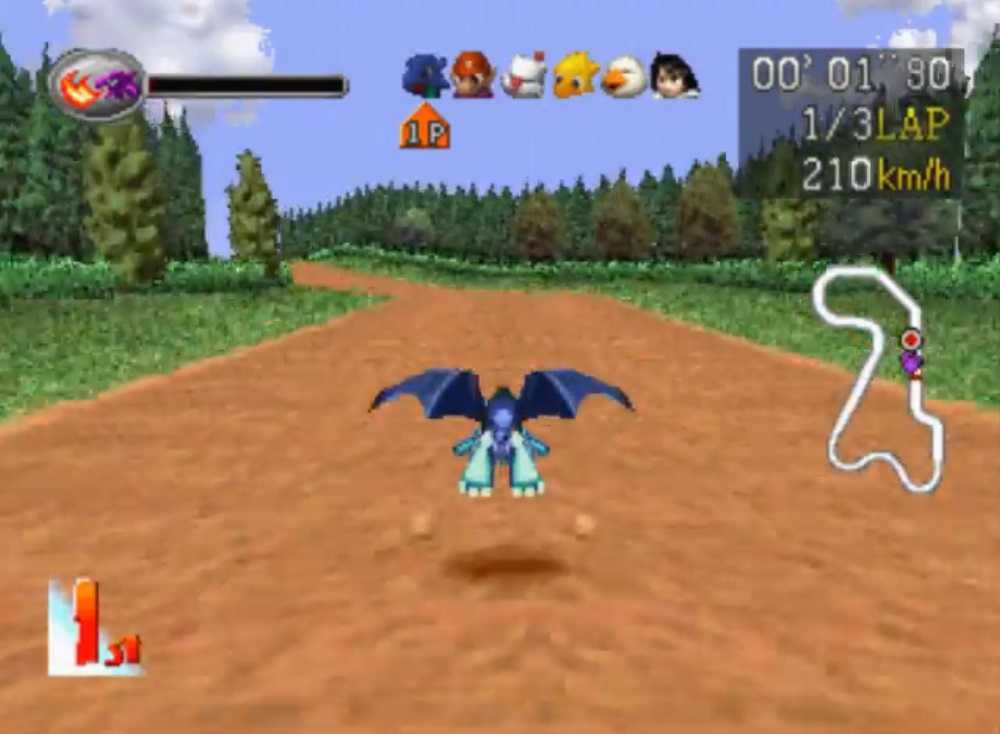
“One thing you had to do” (no, let’s not talk about weird vehicles)
Speaking instead of Cloud and Squall, the two have caused a sensation for having been confirmed as elements of a season pass for Chocobo GP before the launch, but those who have loved Racing outside of retrogaming know that the return of racing on the Switch is not the first revival attempted by Nintendo. The promising Codename: Chocobo Racing 3D for 3DS. Nothing more has been heard of it for some time. It wasn’t until October 10, 2013 that the director of the original game, Takashi Tokita, regretted the cancellation.
Tokita added that if he had been involved in the project, he would “make sure” it was fulfilled. In short, the return of Chocobo on motorized skates is anything but obvious. For our part, we can’t wait to try our hand at new and old pilots (including Gilgamesh!) Starting from March 10. Until then, however, we strongly advise you to discover the humble (bordering on the concept of prototype) of this unique motoring reinterpretation of the world of Final Fantasy. Who knows, if you love both the genre and Square’s imagery, you may have found a new title to put on top of the podium.
Now it’s up to you to tell us yours: what do you think of this lost pearl? Let us know below, and as always don’t forget to stay on TechGameWorld.com for all the most important news for gamers and more. For your purely gaming needs, you can instead find the best discounts in digital format on Instant Gaming.






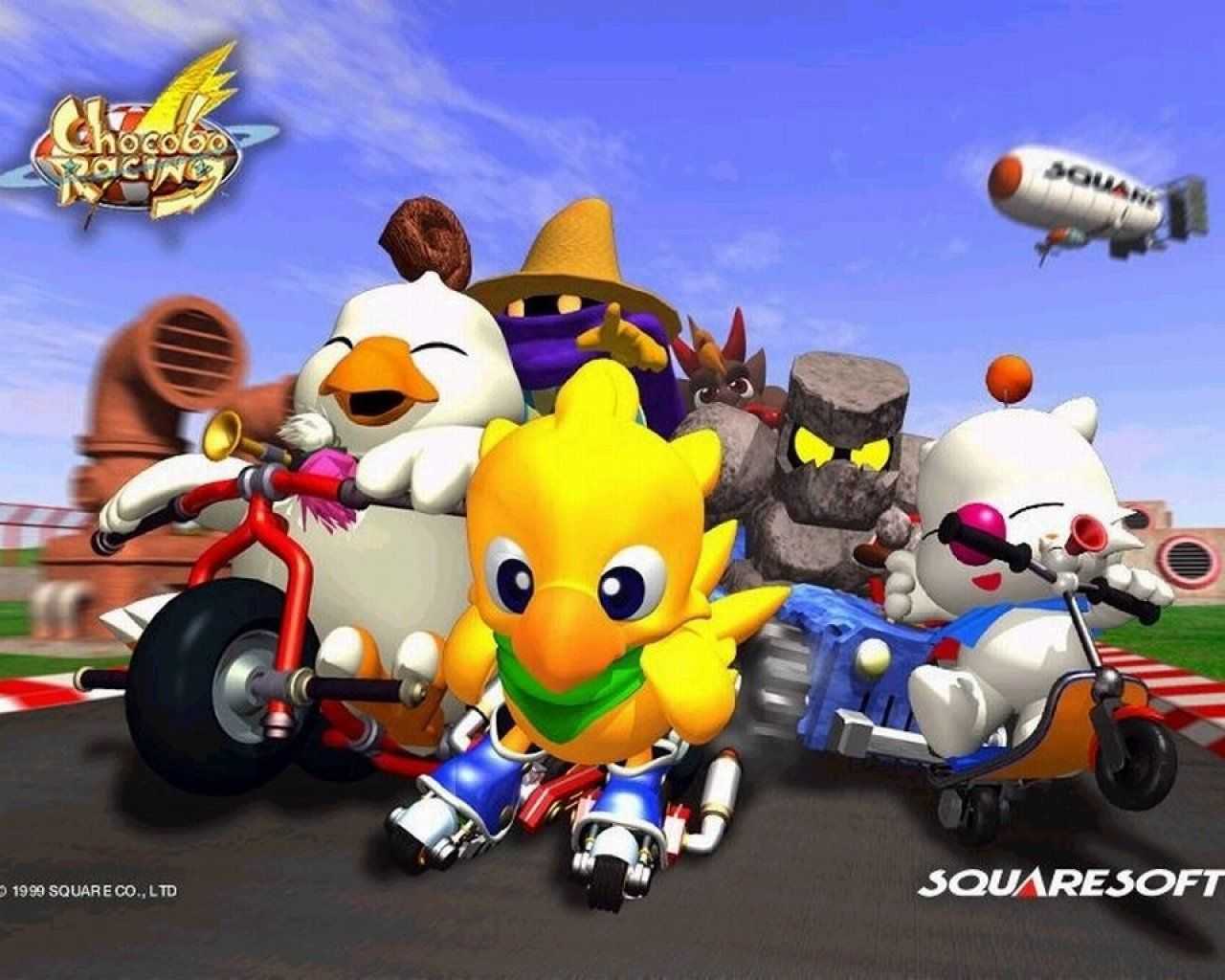








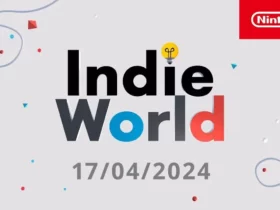
Leave a Reply
View Comments